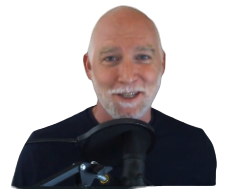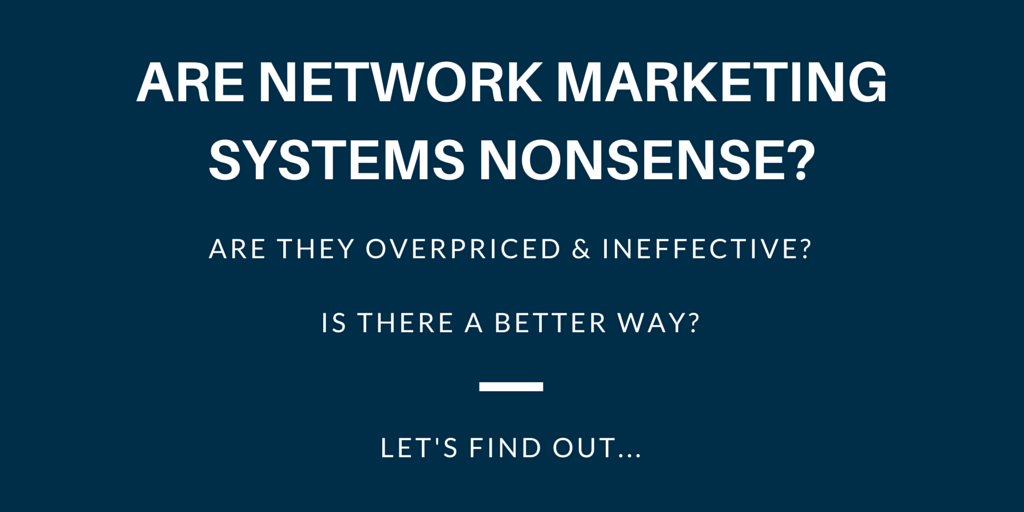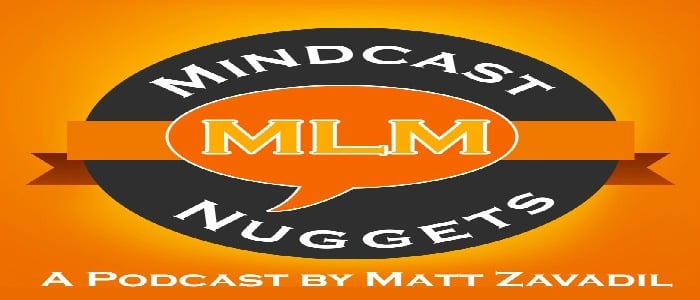 Written by Matt Zavadil
Written by Matt Zavadil
Updated January 5, 2021
Today, you’ll write out your Personal Mission Statement.
First, though, let’s consider what you’ve done over the last 4 lessons.
You’ve thought about and written down those things you forgot from childhood and what the end of your life should look like. You’ve identified your most important values and principles inside a Personal Philosophy.
You’ve done more work on yourself than 99% of the people around you.
You’re doing a great job! Now, we’re going to tie it all together into a Personal Mission Statement.
“Creating a Personal Mission Statement will be, without question, one of the most powerful and significant things you will ever do to take leadership of your life. In it you will identify the most important roles, relationships, and things in your life – who you want to be, what you want to do, to whom and what you want to give your life, the principles you want to anchor your life to, the legacy you want to leave. All the goals and decisions you will make in the future will be based upon it. It’s like deciding first which wall you want to lean your ladder of life against, and then beginning to climb. It will compass a strong source of guidance amid the stormy seas and pressing, pulling currents of your life” –
Stephen Covey, The Seven Habits of Highly Effective People
A Personal Mission Statement Boils Down To Answering 3 Questions
What is my life all about?
What do I stand for?
What kind of action do I commit to in order to ensure I authentically live what my life is about and what I stand for?
In addition, your Personal Mission Statement helps define whom you will be (your character) and what you’ll do to create value in the lives of others.
Your Personal Mission Statement Is Not a “To Do” List
Instead, it’s a “timeless” statement that allows you to roll with any event in your life, be it positive or negative. It’s your personal constitution by which you’ll live and by which you’ll navigate yourself with as you experience life.
I hope you’ve spent some quality time over the last few weeks in your Peaceful Place and practiced not only thinking about the exercises I’ve given you, but also on reflecting within as you sit in silence.
All of that is great practice for developing your Personal Mission Statement. Creating a Personal Mission Statement is a process of going deep within yourself and deciphering what it is you’ll truly accept in your life and that which you won’t.
As you go within yourself, you’ll realign the way you view the world (your life paradigm) with proper principle and values (for you).
You’ll come out at the end of this process with a clear focus for how you’ll relate with the world around you.
You’ll have a compass to guide how you interact with the people and events you encounter. This compass allows you to remain calm and peaceful inside regardless of whether the current moments of your “outside” life are calm or treacherous.
This Process Is a New Beginning For You
With a Personal Mission Statement, you’re going to more effectively navigate through life with a sense of purpose.
As the Stephen Covey quote said above:
“All the goals and decisions you will make in the future will be based upon it. It’s like deciding first which wall you want to lean your ladder of life against, and then beginning to climb.”
Steven Covey
One thing I want to stress with you is that wherever you are in life today…it’s all OK!
If you’re living with feelings of regret or “wishing things had gone differently”, I’d like to encourage you to begin changing your life paradigm by becoming aware of these thoughts and then consciously changing this line of thinking.
Accept who you are and where you are. It’s all OK because you’re becoming more and more aware throughout this process.
How can you ever expect to get to a place where you’re living the life of your dreams if you don’t first accept that this is merely a starting point on the way to becoming and living as that person you envision yourself as?
Your life is going to change for the better. Not overnight…but it will happen.
Your Personal Mission Statement helps you identify and see what you will become… the person you want to be, how you want to feel inside, who you want to help, what you want to do, who you want to be around, etc.
It must, then, be written in the present tense. Although you may not feel like or be doing what you’d like to in the future, it’s time to write down who you are in terms of now. As you review and internalize your Personal Mission Statement, you’ll be becoming that person during each moment of the process.
Let’s Bring Your Personal Mission Statement To Life…
What I’m now going to lead you into are exercises to bring your Personal Mission Statement to life. There’s no “right” way to do this. The order I’m structuring things here isn’t necessarily the order you need to think about when going about the process.
Use these exercises as a beginning point and understand that this isn’t a one-time deal.
Give yourself time on this process
Allow yourself time to reflect within and analyze yourself. It may take a few weeks or months to bring your rough drafts to the finalized version. Then, you’ll want to make minor changes over the years as you gain new perspective and insight on life.
How To Start Creating Your Personal Mission Statement
First, begin to reflect on the answers to the questions you already gave yourself during Lessons 1-4. Take some time to read through it all and get a sense of the person you want to be and the life you want to create for yourself.
Now, here are a few more questions for you to ponder…
1) Who inspires you the most and what are the qualities they possess that make you feel this way about them? It doesn’t matter whether these are people you personally know or don’t know.
2) Imagine yourself as 100 years old, relaxed, and reflecting back on your life. What is it that matters most about your life?
- Relationships? Which ones?
- Accomplishments? Which ones?
- What you’ve acquired?
3) If you could get a message across to a large group of people, what would your message be and whom would you tell it to?
4) In your life so far, what challenges or difficulties have you already overcome? How did you do it? What talents or values shone through during these times?
More Questions To Ponder
1) Do you know of any dreams or goals your parents had that went unfulfilled? How have you seen this affect them throughout their lives? How has this knowledge affected you?
2) Think about the people in your life. People such as your grandmother, grandfather, mother, father, uncles, aunts, brothers, sisters, friends, teachers, etc.
Going through them one by one, what is the one positive thing each one would say about you? What talents or gifts that you possess would each one most likely focus on?
Again, one by one, what is the one thing that each of them possessed in terms of positive qualities that stands out most to you?
One by one, what is the one form of pain, sadness, unhappiness, or regret that each one held on to the most during their life?
This process will help you identify more positive qualities, values, and principles you want to live your life by as well as the types of negative emotions or qualities you will no longer accept in your life.
3) Think of a person you believe is living a life you are jealous of.
- What is it that you believe this person has or does that is so wonderful?
- What do you think they feel as they live each day inside this life?
4) Describe in detail your ideal day. Go for it here. Don’t think in terms of limitations or “reality”. What type of day would be your “dream day”? Describe it in terms of your relationships, work, relaxation time, etc.
5) Try this: It’s one year from today. It’s 8am on a Monday morning.
- What are you doing?
- Who are you with?
- Where are you?
Try this for Wednesday at noon or Saturday evening at 6pm. Envision what your ideal days and weeks look like.
6) In the entire world,
- What gets you the most excited?
- What gets you the angriest?
- What would happen if more people got excited by what excites you or got angry about what angers you?
- Are there any directions your life could take that would best help you further what excites you?
- Are there any directions your life could take that would help you change that which angers you?
7) What have you always wanted to go to school for but never did?
8) Who or what type of people do you most often get into deep conversations with? What do you talk about during these times?
9) What types of magazines, TV shows, or books interest you the most? Why?
10) If you inherited a fortune and had to give it all away or get nothing, where would you direct that money? Who would you help?
11) If a magic genie told you he could turn you into a best selling author and you had to choose a subject to write about that would help solve one issue in the world, what one issue would you choose?
Now Start Your Rough Draft
Read through all your notes, questions, quotes, answers, etc.
Focus in on the values and principals that seem to keep popping up.
- Who are you seeing it is that you want to help during your life?
- What difference do you want to make to others during your lifetime?
- What is it that you seem to want to be doing with your life?
- With these thoughts and images in your mind, begin to write out a rough draft of your Personal Mission Statement.
Use The Present Tense
In the present tense, describe the person you want to be and the things you want to do.
For example, instead of saying “I want to be grateful,” say, “I am grateful every day for all that I’m blessed with in my life.”
Remember what I said above. This is not about writing a “to do” list. This is a timeless document that reflects the values and principles upon which you live your life.
For example, you might say things such as:
“Respect is what I treat each person I come into contact with”.
“I am trustworthy and honest in all areas of my life”.
“I take on each challenge in my life with a positive attitude and expectation of a positive outcome”.
“I am a loving person”.
“I am committed to investing quality time with my family each and every day”.
“I am always supportive of all my friends. I listen first and speak second”.
“I believe that nothing is impossible”.
Suggestion: Use Headlines
One suggestion for structuring your Personal Mission Statement is to list each area of your life as headlines and then describing how you live each one.
For example, you might list it like this:
- Family
- Friends
- Work
- Accomplishment
- Spirituality
- Money
- Personal Development
- Conflicts
- Possessions
- Quotes
This is only a suggestion, as many people simply list one sentence after another. Here is Mahatma Gandhi’s Personal Mission Statement:
“Let the first act of every morning be to make the following resolve for the day:
I shall not fear anyone on Earth.
I shall fear only God.
I shall not bear ill will toward anyone.
I shall not submit to injustice from anyone.
I shall conquer untruth by truth. And in resisting untruth, I shall put up with all suffering.”
There Is No “Right” Way
In the end, there’s no right way or wrong way to write your Personal Mission Statement. It can be one sentence, one paragraph, a one-page document or several pages long.
Again, give yourself time with this process. It won’t get completed in one sitting and it could be a couple of months down the line before you have it done.
The bottom line, as Stephen Covey said in First Things First, developing your Personal Mission Statement is “connecting with your own unique purpose and the profound satisfaction that comes from fulfilling it.”
If you’re struggling with this process a bit, don’t worry, it will take shape over time as you continue to reflect on the work you’ve done thus far. In addition, future Life Purpose University™ lessons will add to your ability to reflect within and understand your personal mission/purpose with more clarity.
Your Assignment
Create Your Personal Mission Statement. Invest quality time on this process. Go back through the new questions I’ve suggested you ask of yourself, combine them with the work you’ve done so far from Lessons 1-4, and begin drafting your Personal Mission Statement.


